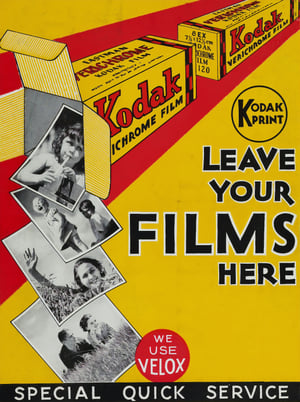An Introduction to the Information-Driven Customer Experience
by Matt, on 12 Jan 2021
From One, to Many, to Millions
In the early days of civilization, hunter-gatherers ate whatever they killed and harvested. Opportunity played a major role in determining whether there was enough to go around. Trade was limited to sharing and exchanging around the campfire.
The agricultural revolution and longer-term settlements led to the cultivation of plants and the domestication of animals. Productivity grew and surpluses became more common. Early consumer-to-consumer trade began, with in-person communication of what was available and bartered settlements.
The production and delivery of goods was directly proportional to the number of people involved. The more hands available to work the land, the more food could be produced.
Specialization emerged, with skilled craftsmen dedicating themselves to the manufacture and repair of tools, weapons, clothing, shelter, and other necessities that could be exchanged. The availability of goods could be ascertained by visiting the workshop or storehouse. Those in need sought out those who might provide.
The next inflection point in productivity and trade was triggered by the industrial revolution. Machines harnessed energy from sources other than muscle power, replicating the productivity of tens of horses and hundreds of men.
Non-linear growth became possible. Advances in transportation – by water, road, and rail – meant surplus goods could be moved to markets with greatest demand. Traveling salespeople and the rise of print media created the first business-to-consumer marketing and sales. Service providers emerged to repair and recondition used goods and machinery.
The technological revolution started slowly. Broadcast media – first radio, then television – expanded the reach of marketing from one-to-many to one-to-masses.
Advertising alerted potential buyers to the availability of different solutions and their purported advantages. Teams of salespeople operated to find and convince those buyers, at their homes, their workplaces, and behind dedicated store fronts. New types of service technician were created to install, troubleshoot, and repair systems too complex for untrained buyers to fix themselves.
The telephone provided a new, rapid method of contacting potential buyers, giving rise to telemarketing and call centers. Information about the buyer’s need and the seller’s solution could be exchanged remotely, at a speed and scale that postal and in-person exchange could not match.
Then came the personal computer and, critically, a world wide web of connected businesses and users.
Marketing reach became one-to-millions. Websites provided a new, rich storefront through which to showcase – and eventually, sell – goods and services.
Exponential growth became possible, driven by the rapid advance in, and falling cost of, computing and telecommunications technology – as famously identified by Gordon Moore, co-founder of Intel, in 1965 and later epitomized in Moore’s Law.
Business-to-consumer (B2C) marketing of mostly commoditized products and solutions quickly embraced this new medium and ecommerce began its inexorable rise. Business-to-business (B2B) commerce, however, remained rooted in personal negotiations between budget-holding buyers and knowledge-wielding sellers.

DIGITAL SIGNALS
In the late 00’s, business experts identified weak signals of the next exponential trend. Digitization was beginning to disrupt everything from consumer goods to heavy industry.
Failure to pay attention to this trend took down global heavyweights like Eastman Kodak (failed to pursue digital photography), AT&T (failed to invest in mobile phones), and Nokia (acquired fixed road sensor company, Navteq, which was rendered obsolete by phone-based GPS and apps like Wayz).
The trend has been fueled by exponential advances and cost reductions in mobile devices, batteries, network speed, and computing power – most recently shifting from on-premises to cloud-enabled processing.
The result is an interconnected world where every type and format of information is available to everyone, everywhere.
This democratization of access to searchable information has transformed the buyer-seller relationship. Buyers are conducting most of their information gathering online before ever alerting potential solution providers to their existence.
The information-enabled age is affecting all aspects of business. Companies that can digitize a sector are able to grow exponentially, leading to the sudden disruption of established industries by neonatal unicorns.
Not surprisingly, consumer goods – where cycle times were already short – have been fastest to embrace information-enabled marketing, sales, and service.
Hyper-personalized marketing, ecommerce, and 24x7 real-time support systems are now expected, supported by artificial intelligence and machine learning algorithms applied to massive streams of real-time data.
B2B businesses – especially those trading in high-value, low-volume equipment – have been slow to follow. They suffer from an entrenched mindset that their products can’t be digitized so they are somehow immune to the hypercompetitive effects of the information age.
In practice, early adopters in the B2B sector are gaining an advantage that could put laggards out of business before they see the threat coming.
EXPONENTIAL DISRUPTION
The difficulty in spotting and responding to exponential threats is a lesson we should have learned from cases such as Kodak, but still have difficulty processing. The impact is initially low – albeit, say, doubling each year. For several periods, the threat is easy to dismiss – from 1% to 2%, 4%, 8%, then 16%, five years later. Then, suddenly, the competitor seems to come out of nowhere to dominate the sector – 32%, 64%, 128%.
This is the inflection point at which many B2B businesses find themselves, whether they realize it yet or not. Others in their sector might be (read: probably are) ahead of them in transforming elements of their business with digital, information-driven approaches.
The impact is still hard to spot, although the weak signals might be detectable with appropriate effort. Unless they act swiftly, the laggards will suddenly find themselves overtaken, losing market share at a catastrophic rate as the new breed of vendor attracts buyers away from the old, information-disabled players.
We are not experts in the digitization of product categories. If a digitally enabled solution can replace your asset-intensive product – as Uber disrupted the taxi industry and Airbnb has disrupted the hotel sector – then you had best embrace that change and be the one to disrupt your own business.
Not are we practitioners of data monetization, where your business revolves around processing and making sense of data gathered or generated by others – such as location and movement, purchasing patterns, search terms, social media posts, or health records.
Our focus is on the information-driven customer experience, where marketing, sales, and customer service unite around a common understanding of the customer.
We believe a customer experience built on strategy, deep customer understanding, consistent information, and the best technology will be the strategic piece that differentiates leading B2B technology companies from the rest in the information-driven age amid which we now find ourselves.
INFORMATION-DRIVEN CUSTOMER EXPERIENCES
In their book, Exponential Organizations (Amazon | Bookshop), Salim Ismail, Michael Malone, and Yuri van Geest refer to the “six D’s” of exponential growth:
- Digitization – data is easy to access, share, and distribute.
- Deception – growth is deceptively small, initially, but suddenly explodes because it is exponential, not linear.
- Disruption – existing businesses are disrupted by the effectiveness and cost of the new approach.
- Demonetization – the new approach becomes dramatically cheaper to purchase, deploy, and utilize.
- Dematerialization – physical products are no longer the controlling element or differential advantage in the market.
- Democratization – the price to enter the market becomes so low that anyone can join. The sector’s prime resource flips from being scarce to being abundant.
We believe Ismail, Malone, and van Geest’s description applies to the B2B enterprise even if the product or solution it sells hasn’t (yet) been digitized.
The customer experience it provides – which underpins the revenue architecture by which it makes money – can follow the same trajectory.
With B2B buyers translating search and evaluation practices from their B2C home lives into the workplace, over 80% of their buying decision is now made before they contact a vendor. By the time active buyers expose their intent to purchase, their choice of solution and vendor is already cast.
To intercept these buyers and encourage them to purchase its solution, a company must make helpful information readily available to the buyer as they undertake their search process. HubSpot calls this Inbound Marketing – “a business methodology that attracts customers by creating valuable content and experiences tailored to them”.
Compared to traditional sales methods, which scale linearly with human effort (more salespeople produce more sales), an inbound approach is increasingly effective and costs little to scale exponentially. Digital channels allow one-to-many marketing reach at a fraction of the cost associated with travel, trade shows, and the sales “milk run”.
Physical presence and assets – booths, visits, product demos – are no longer critical to buying process, displaced by websites and other digital properties, videoconferences, animation, and virtual reality experiences.
Small companies can market new solutions just as effectively as – and in some cases, more effectively than – larger, established players because the entire target audience can be reached with a fraction of the budget it would have taken a decade ago.
Small sales teams fed a steady stream of highly qualified leads by their digital marketing colleagues can provide personalized, relevant advice and proposals. This leads to higher close rates, larger deal sizes, and greater customer satisfaction.
With product information freely and widely available, and market access dematerialized and democratized, competing providers seeking differential advantage must focus on the quality of the buyer’s experience.
Wherever the buyer experiences the least friction in finding the information needed to make their decision, they are most likely to make their purchase.
This is the imperative for delivering an information-driven customer experience that identifies potential buyers early in their journey and helps them to:
- Name and frame their challenge,
- Identify and research potential solutions,
- Understand the implications of investing in a solution and the consequences of doing nothing, and
- Make an informed decision based on their unique set of circumstances.
Uniting marketing, sales, and customer service around a common set of client information creates a seamless process where the buyer doesn’t even notice the handoffs as they transition from prospect to lead to buyer to user.
Even the customer service group, traditionally siloed separately from marketing and sales, is plugged into the same information ecosystem. This ensures the same level of personalized engagement that ushered the customer through their buying journey.
Better informed service staff are able to maintain a higher level of customer satisfaction, reduce churn, increase the number of repeat purchases, identify and pursue upsell and cross-sell opportunities, and help turn customers into advocates.
What will become of companies who stick to their belief that B2B marketing, sales, and service processes just can’t be “digitized”? Is there still room for “old school” approaches rooted in cold calling, trade shows, client entertainment, and rinse-and-repeat sales pitches?
For a while, yes. Not everyone or everything is going to change overnight. But once someone in their space begins delivering an information-driven customer experience, the exponential clock will begin ticking. And, once the truly intransigent are sufficiently impacted to pay attention, it’ll be too late for them to react.
Photo Credits
Photo by Arnaud Mariat on Unsplash
Photo by Museums Victoria on Unsplash
Photo by Alexander Andrews on Unsplash
OTHER RECOMMENDED POSTS
Are We Ready To Implement An Information-Driven Customer Experience?
Improving The Customer Experience: Where To Start
3 Ways To Keep Up With Your Customers



